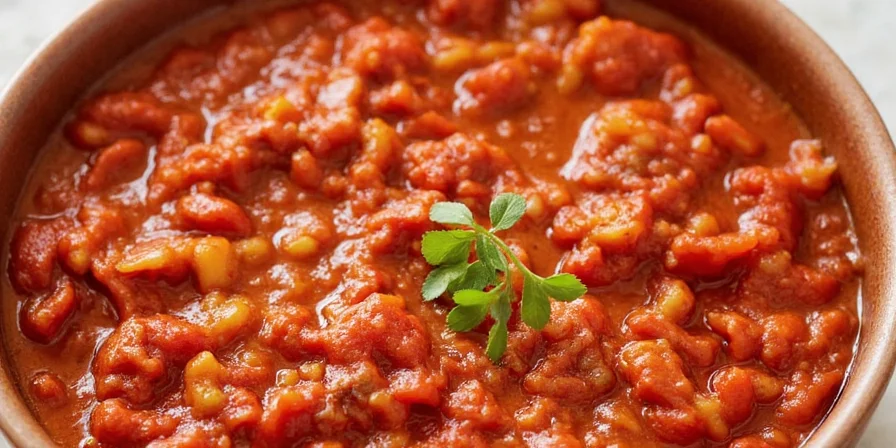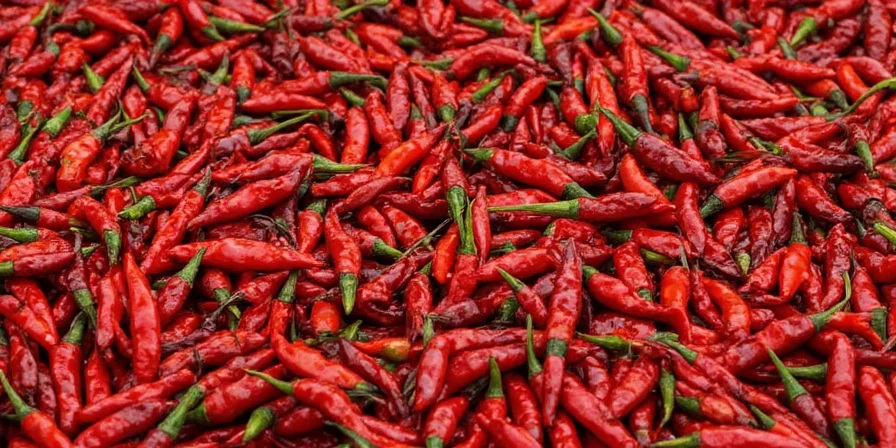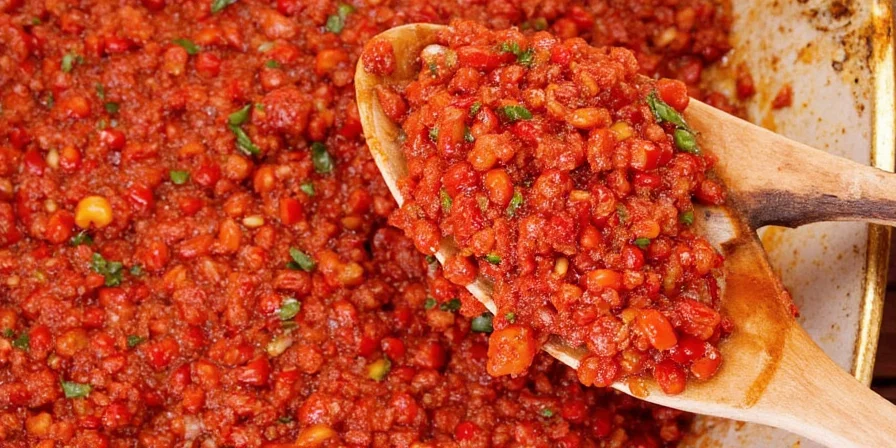Chili Colorado: From Dried Peppers to Bold Flavors
If you've ever bitten into a dish that made your taste buds scream "¡Ay, caramba!", there's a good chance chili colorado was involved. Known for its deep red hue and smoky heat, this dried chili pepper is a staple in traditional Mexican kitchens — and it deserves a starring role in yours too.
Table of Contents
- What Is Chili Colorado?
- Flavor Profile & Heat Level
- Top 5 Practical Tips for Using Chili Colorado
- Rehydrate or Grind? That Is the Question
- Must-Try Recipes with Chili Colorado
- Storage & Substitution Guide
🌶️ What Is Chili Colorado?
Let’s clear up the confusion right away: chili colorado isn’t one specific type of chili. Rather, it’s a general term used in Mexican cooking to refer to any dried red chili — often Ancho, Cascabel, or Guajillo peppers — that lend dishes their signature reddish tint. Think of it as the superhero cape of Mexican spices: bold, dramatic, and packed with flavor.
The name “colorado” literally means “colored” or “red,” which gives you a hint about its visual impact on food. But beyond just adding color, these chilies bring depth, sweetness, and sometimes a little fire to sauces, moles, soups, and stews.
🔥 Flavor Profile & Heat Level
| Chili Type | Heat (SHU) | Flavor Notes | Best For |
|---|---|---|---|
| Ancho | 1,000 – 2,000 | Smoky, sweet, raisin-like | Moles, adobos |
| Cascabel | 1,000 – 3,000 | Nutty, earthy, slightly tangy | Salsas, stews |
| Guajillo | 2,500 – 5,000 | Berries, tea-like, citrusy | Red sauces, marinades |
So while each chili brings something different to the table, when combined or chosen individually, they all fall under the umbrella of “chili colorado.” You’re not just getting heat — you’re unlocking layers of flavor that elevate your cooking from basic to brilliant.

📝 Top 5 Practical Tips for Using Chili Colorado
- #1 Don't skip the toast! Lightly dry-roasting the chilies before using them intensifies their flavor. Just a few seconds in a hot skillet can make all the difference.
- #2 Stem and seed wisely. If you want less heat, remove most or all of the seeds and inner ribs. If you're brave, leave them in!
- #3 Blend with purpose. When making sauces, blend the rehydrated chilies with garlic, onions, or spices for maximum richness. A splash of vinegar or lime juice can brighten things up.
- #4 Use broth instead of water. Rehydrating chilies in chicken or vegetable broth adds even more depth to your sauce base.
- #5 Cook low and slow. Letting sauces simmer gently helps develop flavor complexity. It’s worth the wait!
🧄 Rehydrate or Grind? That Is the Question
You’ve got options! Whether you should rehydrate whole chilies or use ground powder comes down to what you're making:
| Method | Pros | Cons | Best Used In |
|---|---|---|---|
| Whole + Rehydrated | More texture, richer flavor | Time-consuming | Sauces, salsas, braises |
| Ground Powder | Quick, easy to store | Less nuanced flavor | Dry rubs, spice blends, baked goods |

Pro Tip: If you're short on time but still want big flavor, try mixing chili powder with a bit of hot stock to create a paste — it’s a cheat code that works every time.
🍲 Must-Try Recipes with Chili Colorado
- Red Chile Sauce (Salsa Roja): The backbone of enchiladas, tacos, and breakfast burritos. Make a batch and keep it in the fridge for days of spicy possibilities.
- Chorizo-Style Ground Pork: Combine pork, lard, chili colorado powder, vinegar, and garlic for homemade chorizo that beats anything from the store.
- Beef Birria: Slow-cooked beef bathed in a rich, spicy, savory chili-based sauce — perfect for tacos or ramen-style bowls.
- Mole Poblano: While chocolate gets all the attention, chili colorado lays the foundation for this iconic sauce.
- Spiced Popcorn: Toss popped kernels with melted butter and a sprinkle of chili powder for a movie night snack that packs a punch.
📦 Storage & Substitution Guide
Storing chili colorado properly ensures your pantry stays fiery and flavorful for months.
- Whole dried chilies: Store in airtight bags or jars in a cool, dark place for up to a year.
- Ground chili powder: Keep in a tightly sealed container away from light and heat; lasts about 6–8 months.
- Chili paste or sauce: Refrigerate for up to two weeks, or freeze in portions for later use.
If you find yourself out of chili colorado mid-recipe, here are some great subs depending on your needs:
| Substitute | Best For | Adjustments Needed |
|---|---|---|
| Paprika + pinch of cayenne | Sweetness without much heat | Add extra spice if needed |
| Chipotle in adobo | Smokiness and heat | Use sparingly; very intense |
| Cayenne powder | Heat boost | Lacks depth; pair with other spices |
| Pepperoncini | Mild Italian twist | Less authentic, but still tasty |
🎉 Final Thoughts: Chili Colorado — More Than Just Color
At the end of the day, chili colorado is like the secret ingredient that turns a good meal into a memorable one. Whether you're simmering a pot of birria or spicing up your morning eggs, it’s got the power to bring warmth, depth, and a touch of drama to your kitchen adventures.
Don’t be afraid to play around with different varieties and preparation methods. Your taste buds will thank you — once the burn wears off, of course 😉.











 浙公网安备
33010002000092号
浙公网安备
33010002000092号 浙B2-20120091-4
浙B2-20120091-4